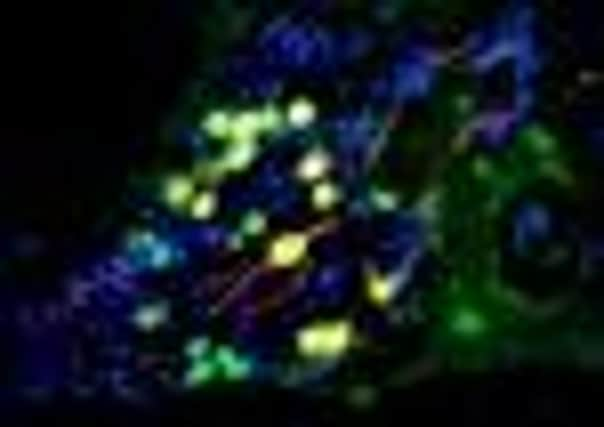State-of-the-art eye treatment ‘could save sight of millions’


Engineers from Sheffield University, who devised the ingenious approach, say it could allow people to retain or even regain their sight.
The team have developed a new method for producing membranes to help graft stem cells onto the eye, mimicking features of the eye itself.
Advertisement
Hide AdAdvertisement
Hide AdThe state-of-the-art technology has been designed to treat damage to the cornea – the transparent layer on the front of the eye – which is one of the major causes of blindness.
Using a combination of techniques, the researchers are able to make a disc of biodegradable material which can be fixed over the cornea.
The disc is loaded with stem cells which then multiply, allowing the body to begin healing the eye naturally.
Ílida Ortega Asencio, of Sheffield’s Faculty of Engineering, said: “The disc has an outer ring containing pockets into which stem cells taken from the patient’s healthy eye can be placed.
Advertisement
Hide AdAdvertisement
Hide Ad“The material across the centre of the disc is thinner than the ring, so it will biodegrade more quickly allowing the stem cells to proliferate across the surface of the eye to repair the cornea.”
A key feature of the disc is that it contains niches or pockets to house stem cells, mirroring niches found around the rim of a healthy cornea.
Standard treatments for corneal blindness involve carrying out transplants or grafting stem cells onto the eye using donor membranes as a temporary carrier to deliver the cells to the eye.
But for some patients, the treatment can fail after a few years as repaired eyes do not retain stem cells, which are required to carry out on-going repair of the cornea.
Advertisement
Hide AdAdvertisement
Hide AdWithout this constant repair, thick scar tissue forms across the cornea causing partial or complete sight loss.
The researchers have designed the small pockets built into the membrane to help cells group together and act as a useful reservoir of daughter cells so that a healthy population of stem cells can be retained in the eye.
Prof Sheila MacNeil, from the university, said the next stage would involve trialling the technique in patients in partnership with specialists in India.
“One advantage of our design is that we have made the disc from materials already in use as biodegradable sutures in the eye so we know they won’t cause a problem in the body,” she said.
Advertisement
Hide AdAdvertisement
Hide Ad“This means that, subject to the necessary safety studies and approval from Indian regulatory authorities, we should be able to move to early stage clinical trials fairly quickly.”
Treating corneal blindness is an urgent problem in the developing world, where there is high incidence of chemical or accidental damage to eyes, but complex treatments such as transplants or grafts are not available.
Frederick Claeyssens, from the university, said the approach could also be used in developed countries. “The current treatments for corneal blindness use donor tissue to deliver the cultured cells which means that you need a tissue bank,” he said.
“But not everyone has access to banked tissues and it is impossible to completely eliminate all risks of disease transmission with living human tissue.
Advertisement
Hide AdAdvertisement
Hide Ad“By using a synthetic material, it will eliminate some of the risk to patients and be readily available for all surgeons.
“We also believe that the overall treatment using these discs will not only be better than current treatments, it will be cheaper as well.”